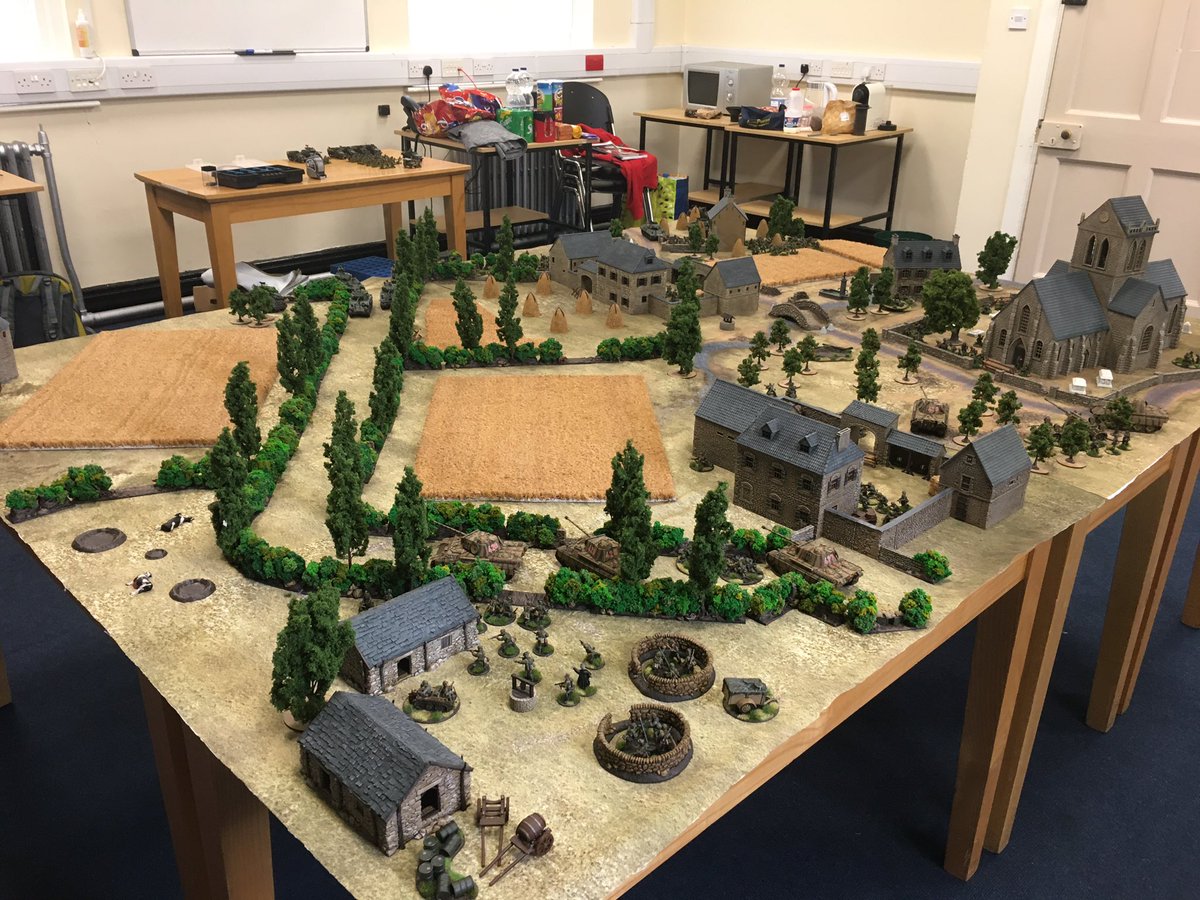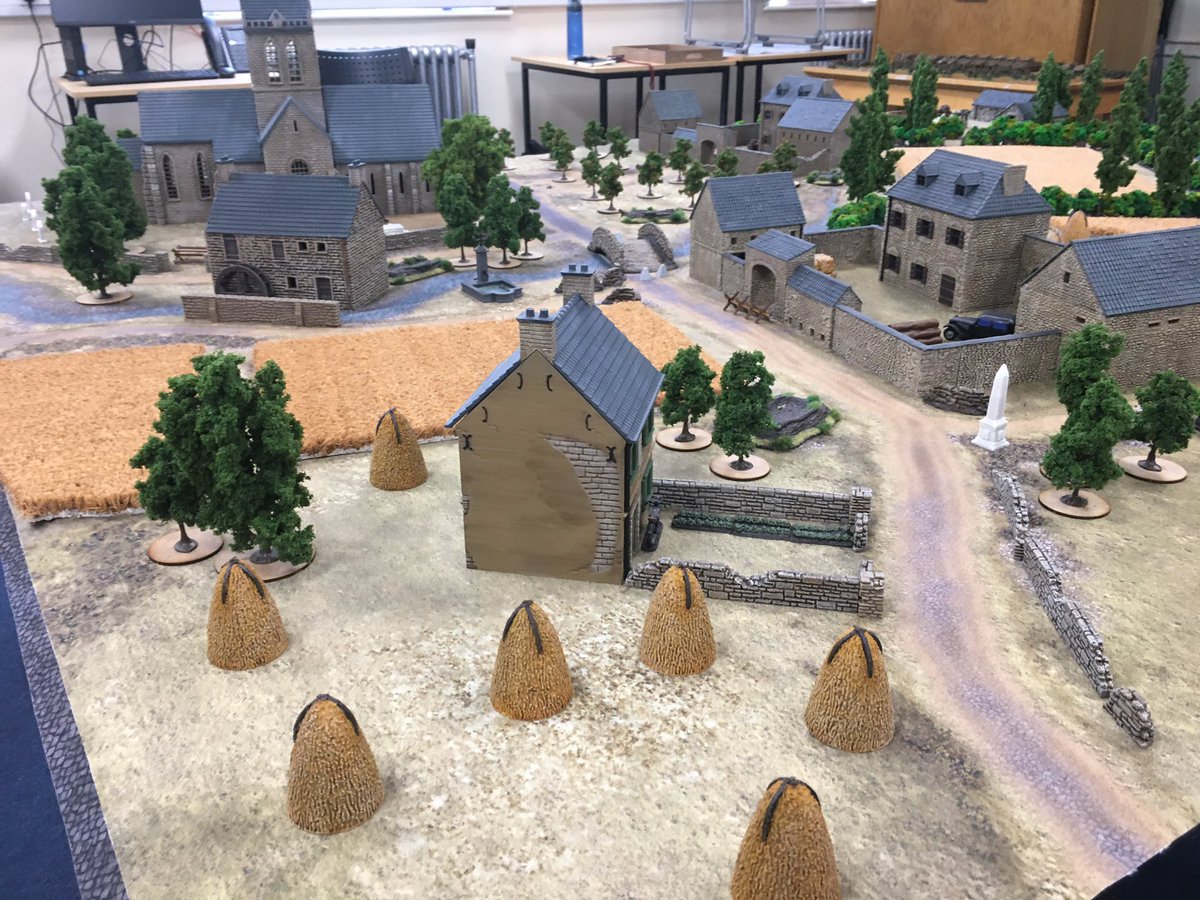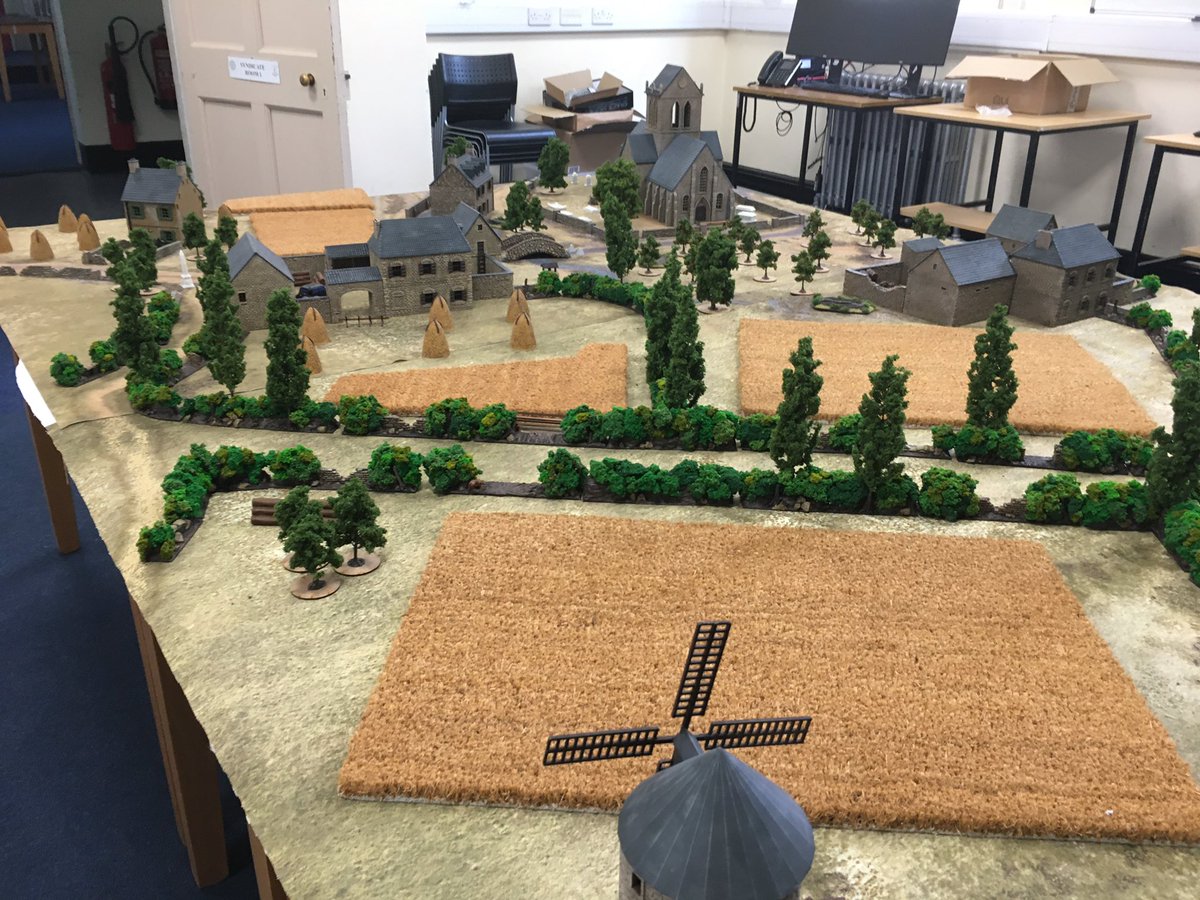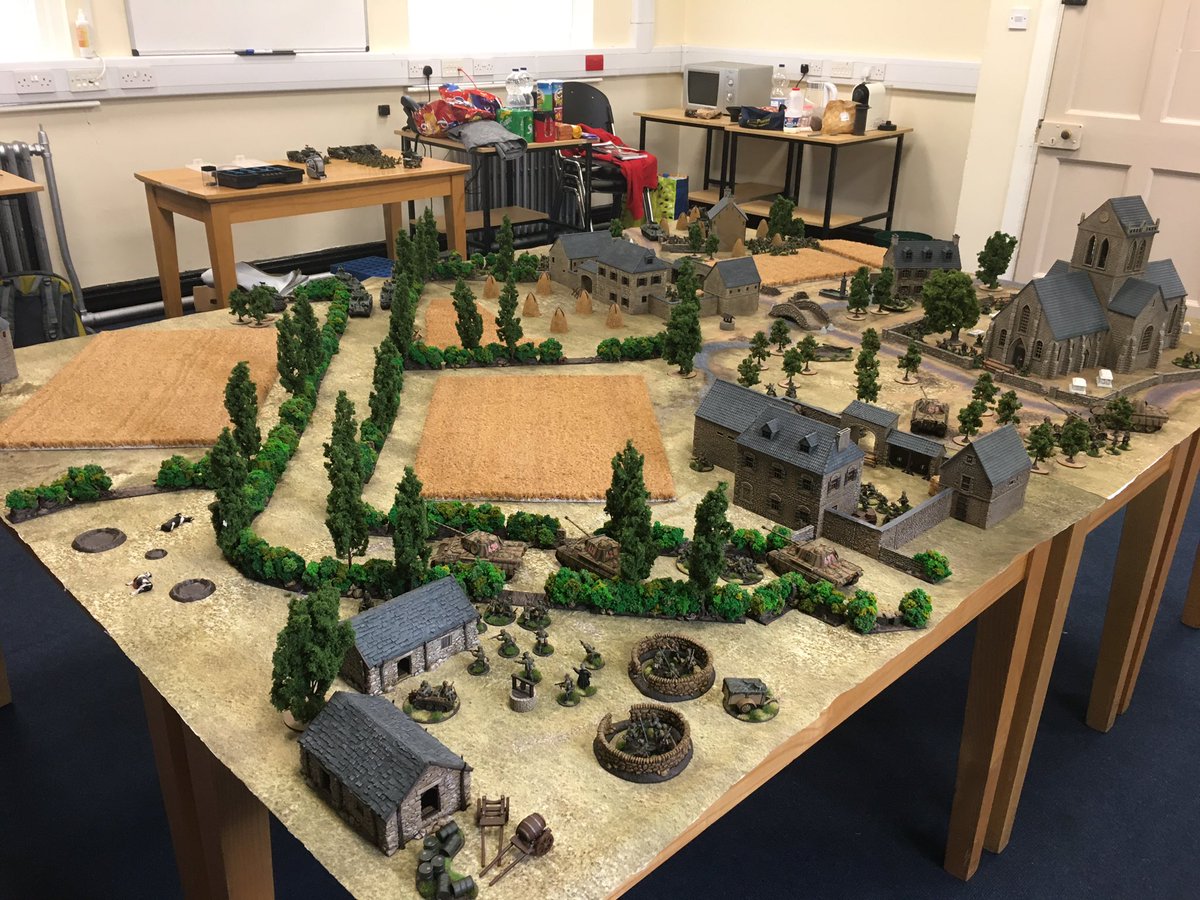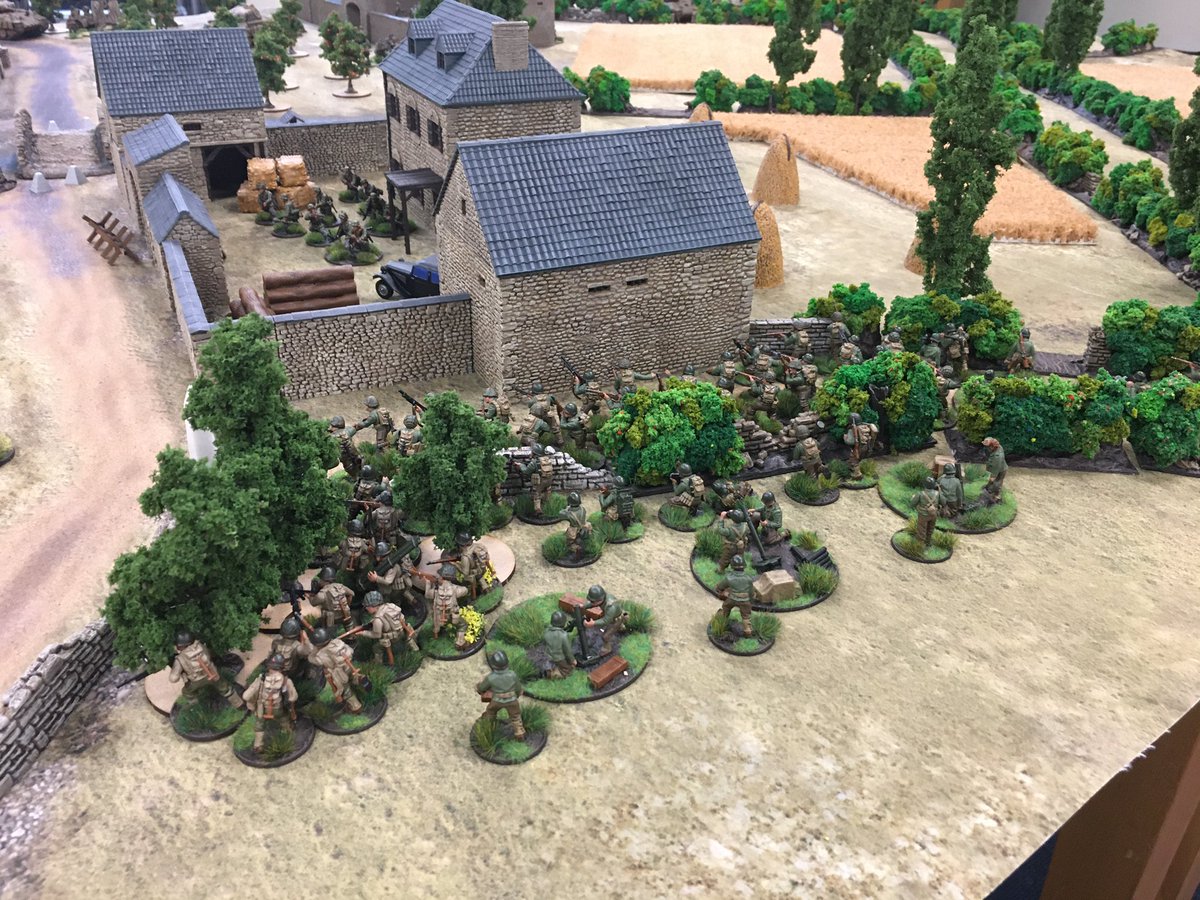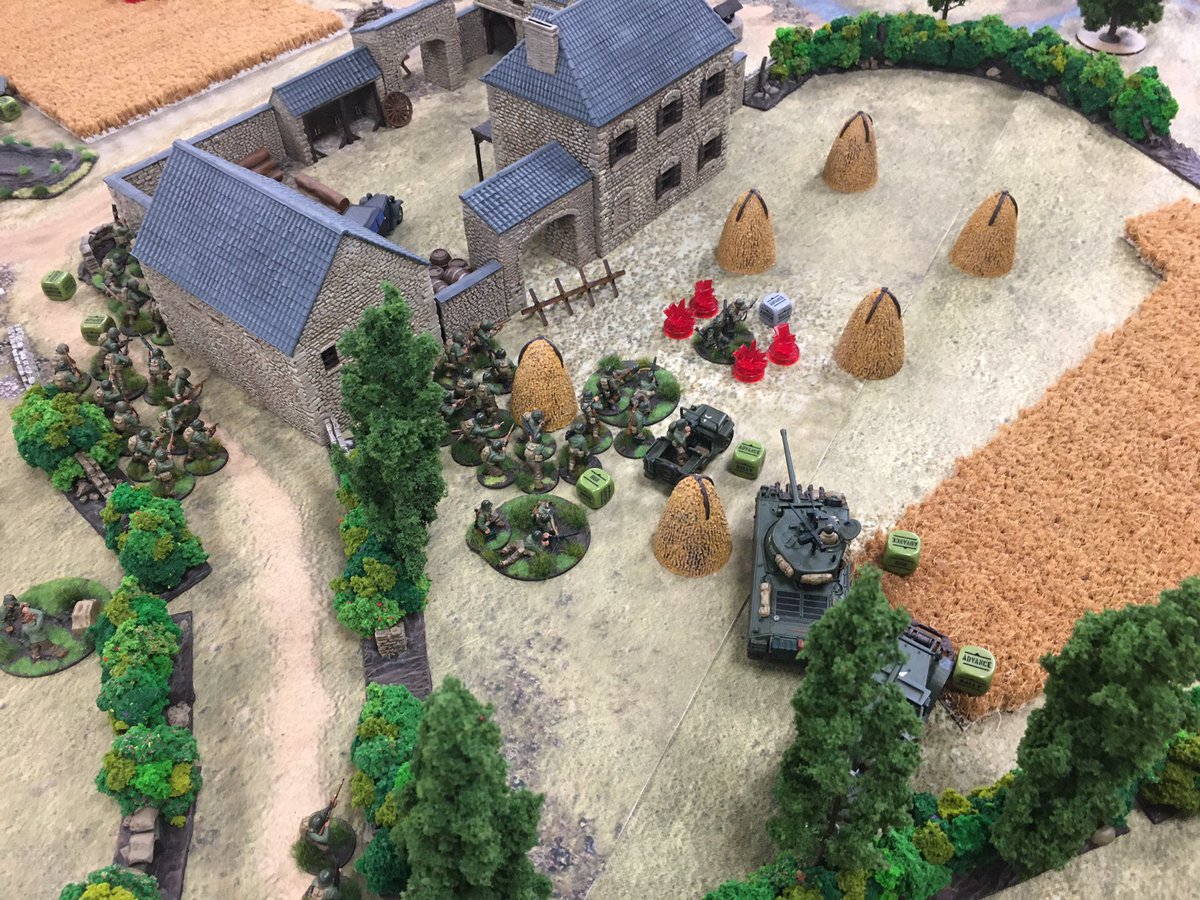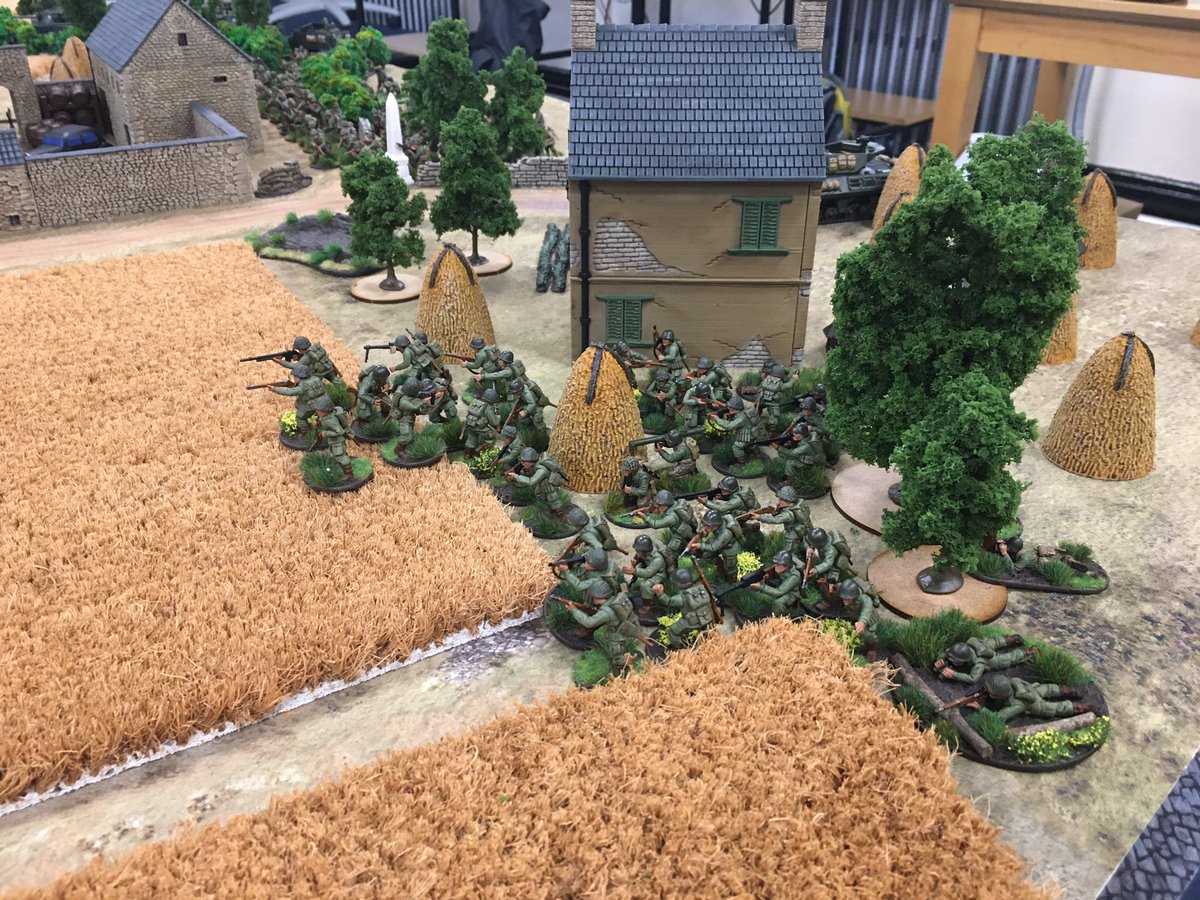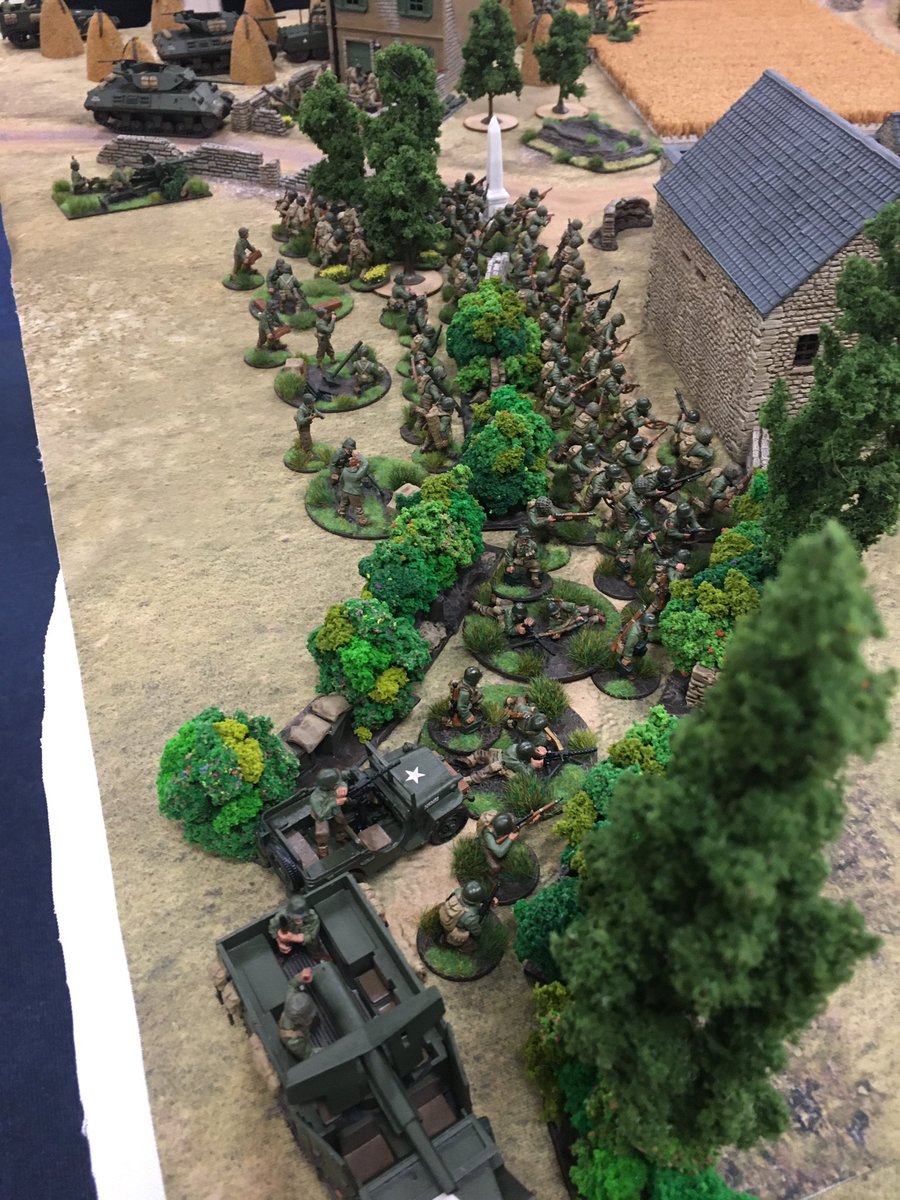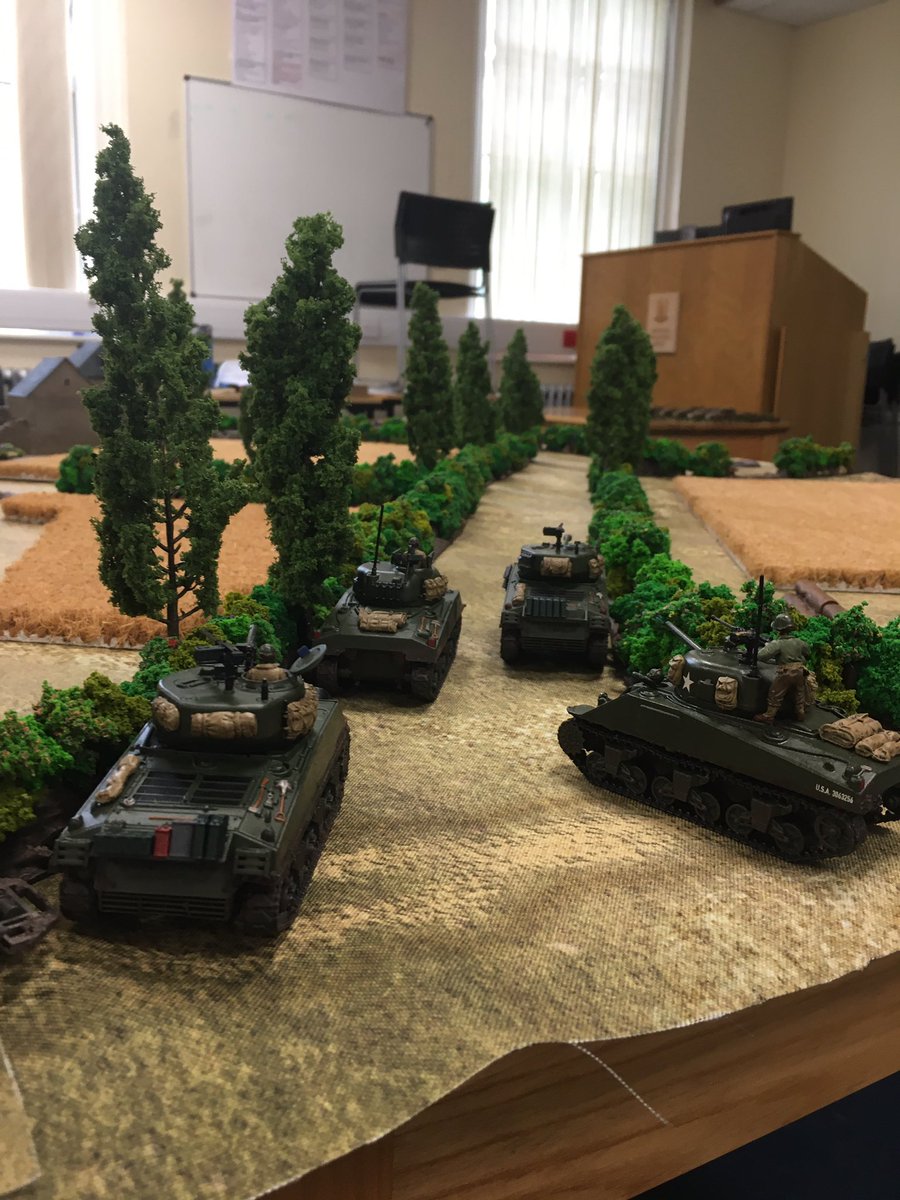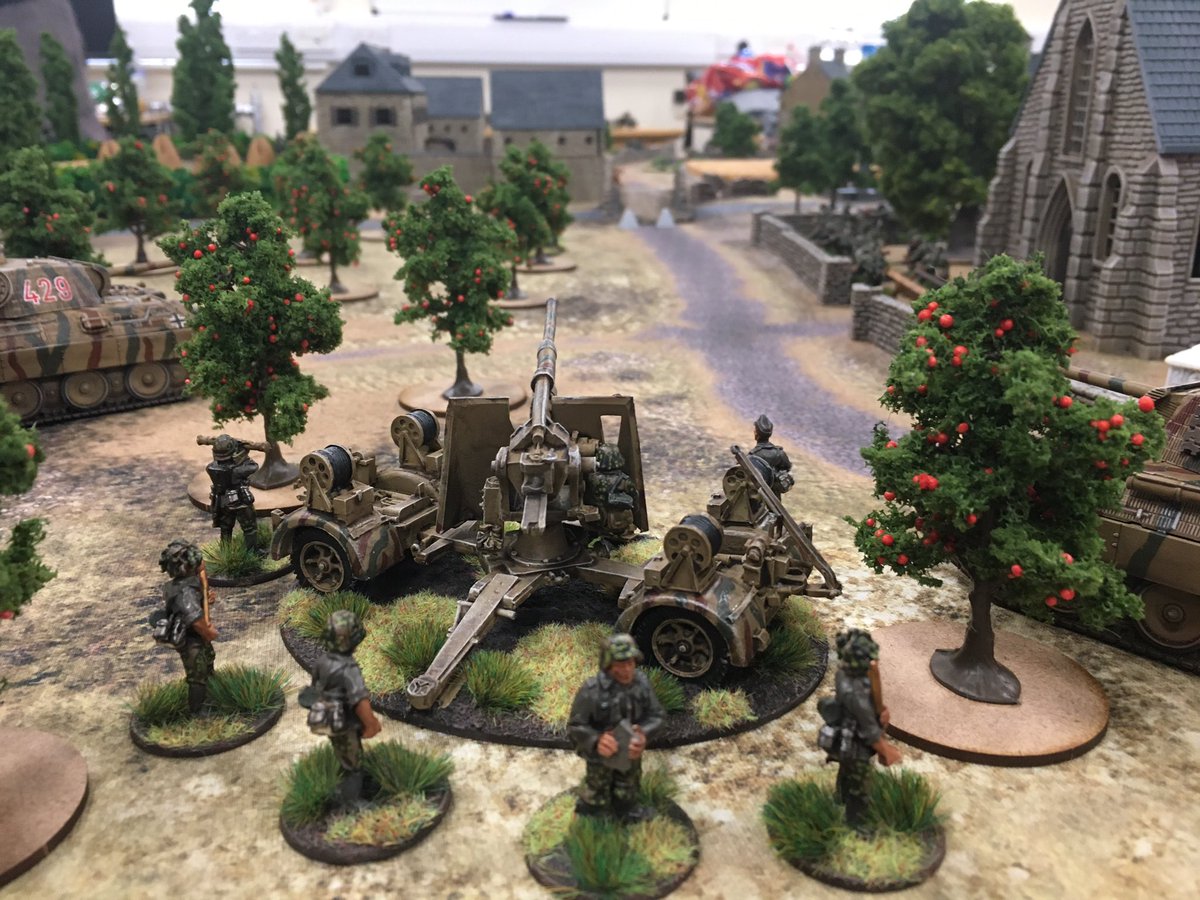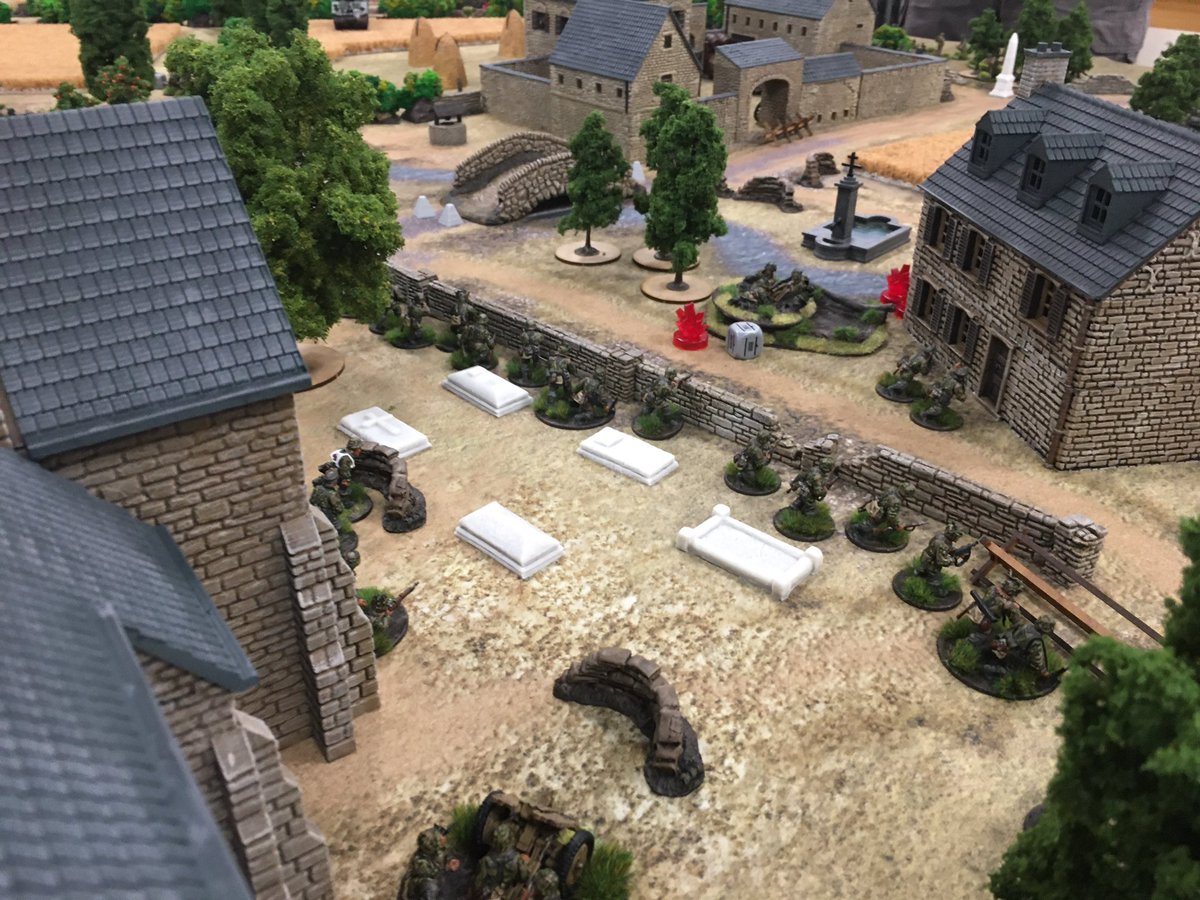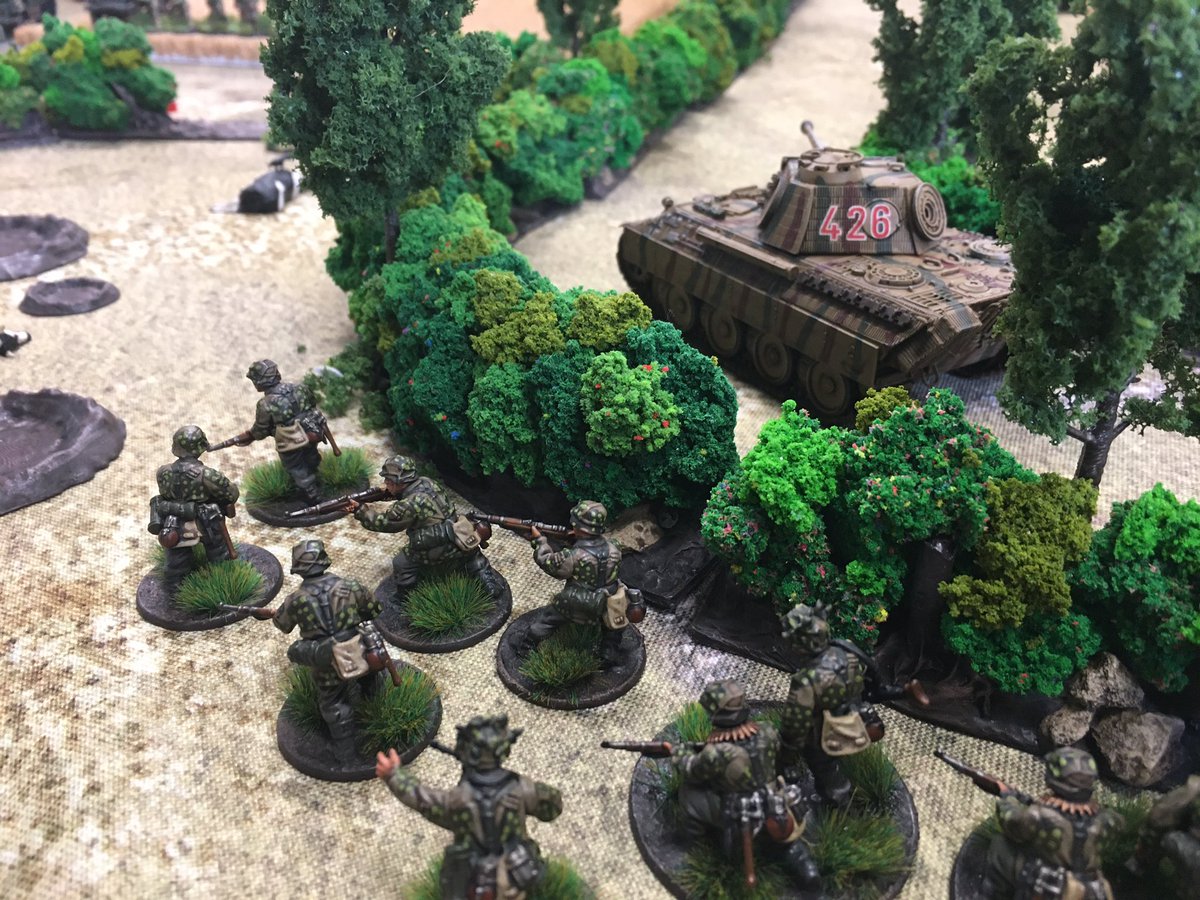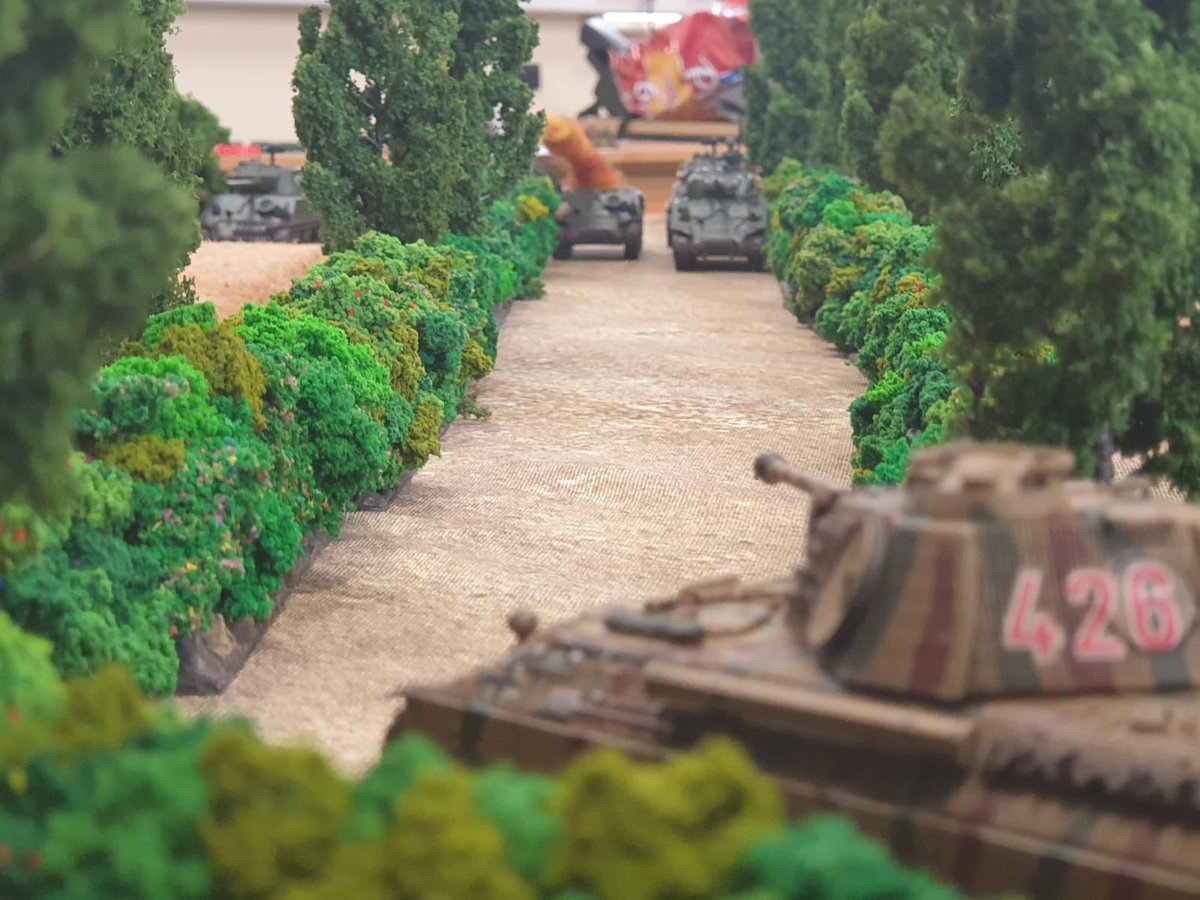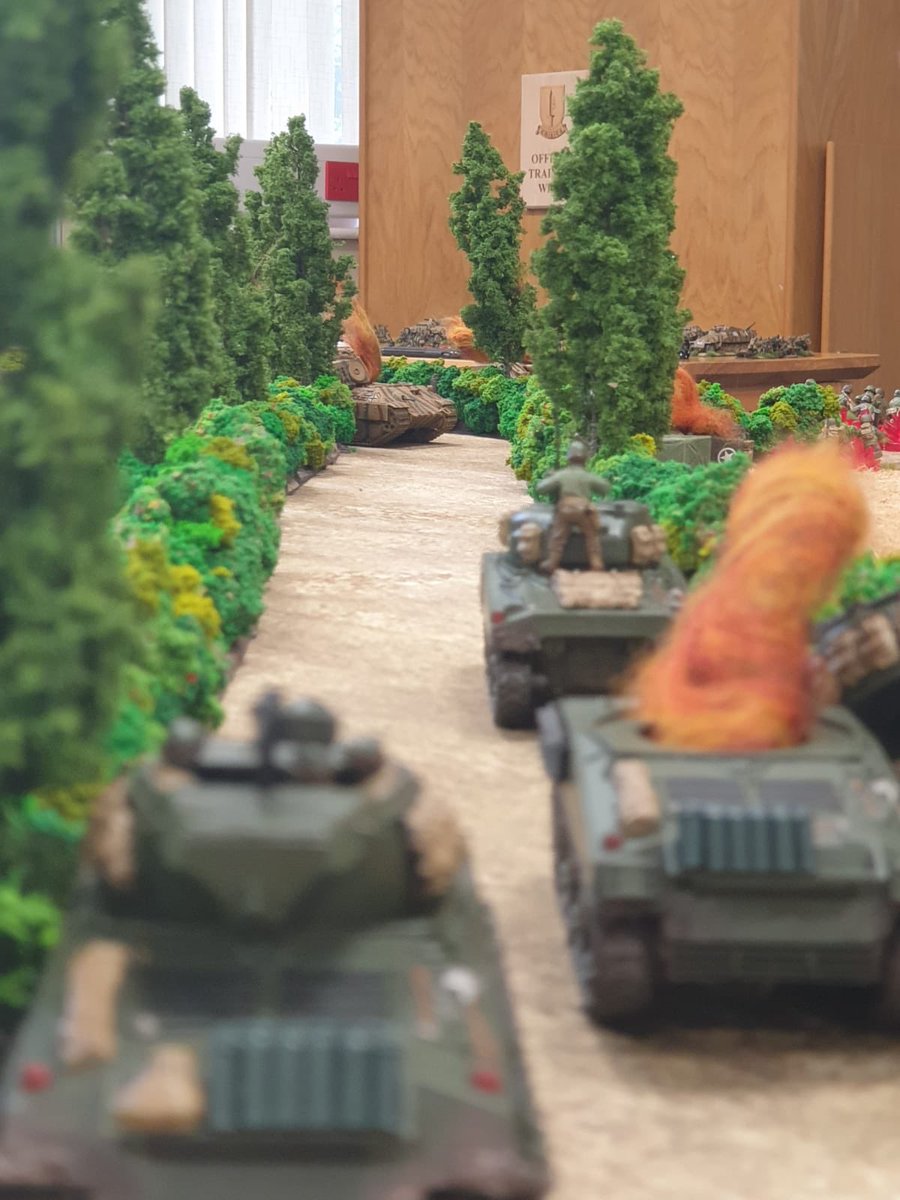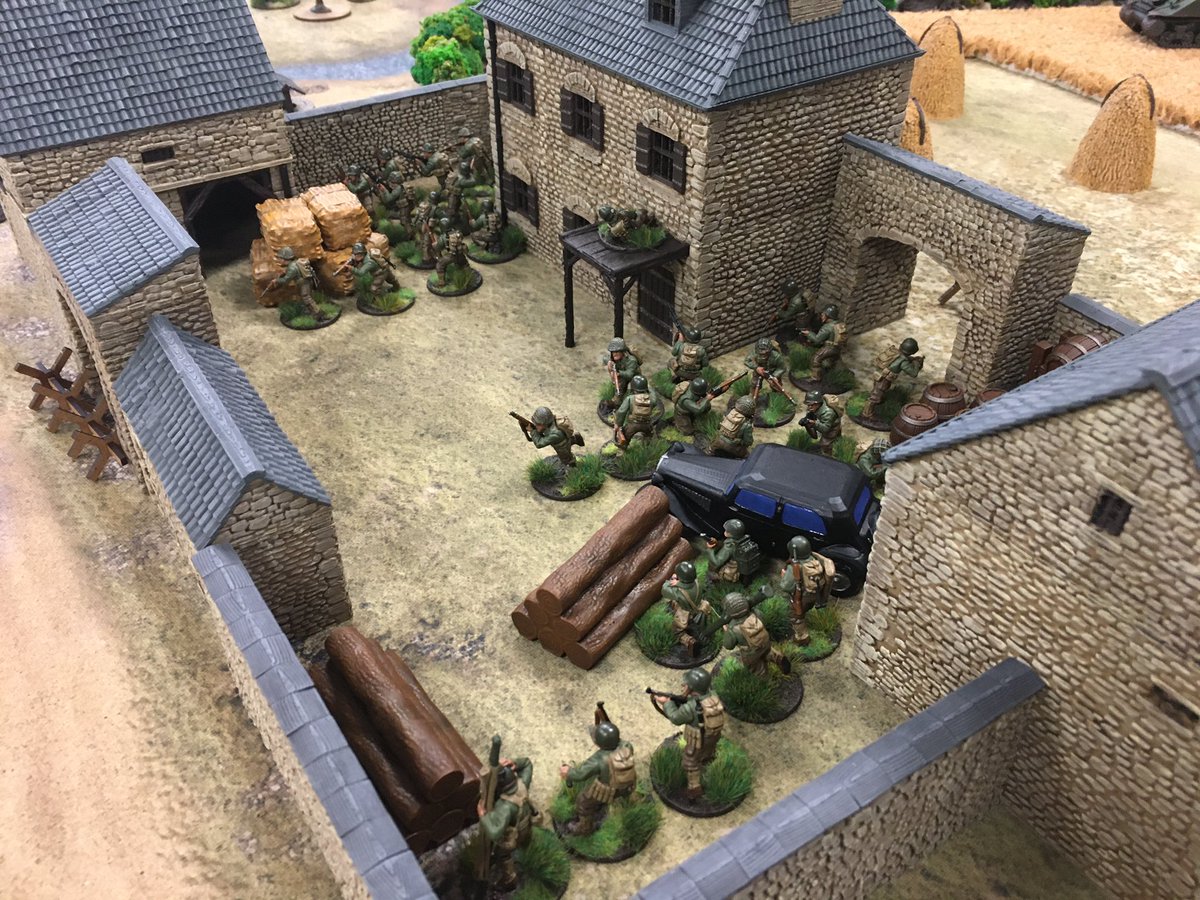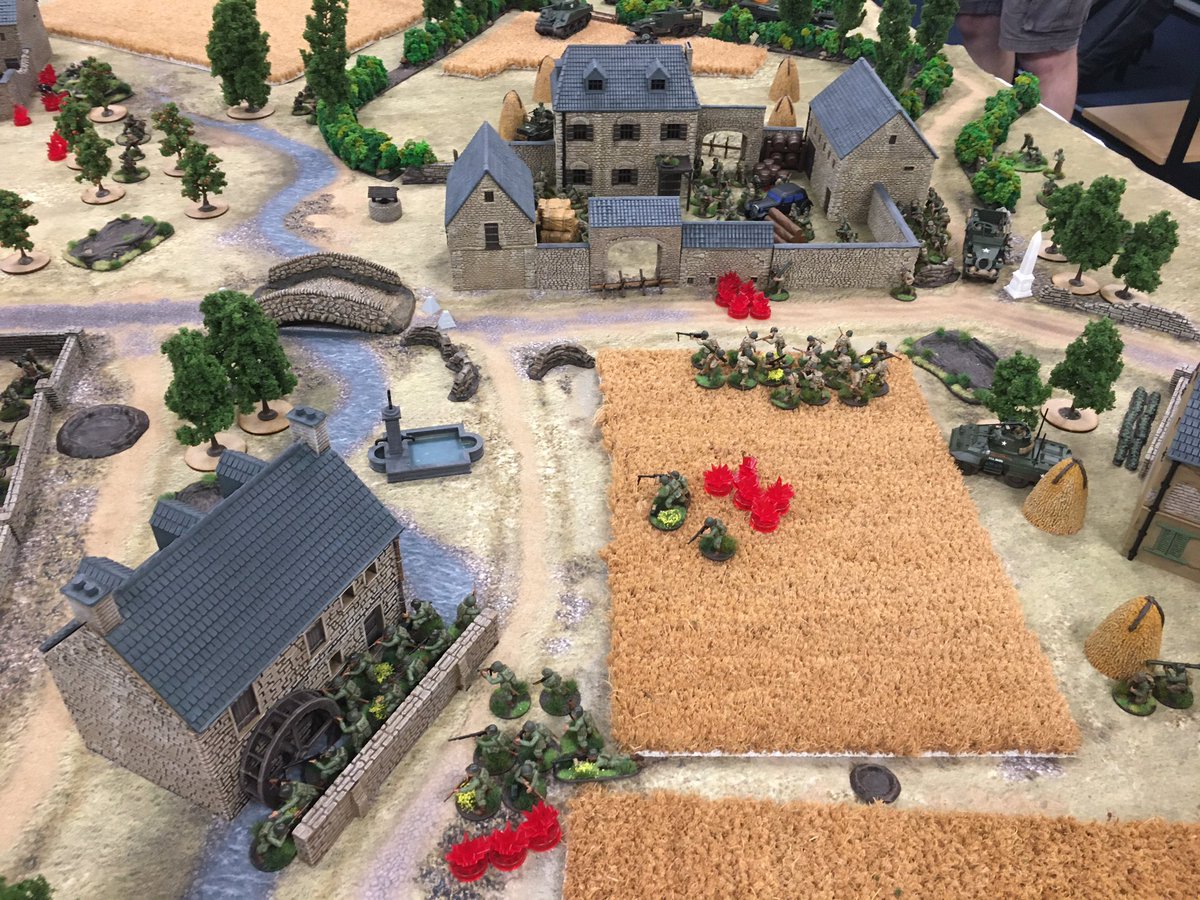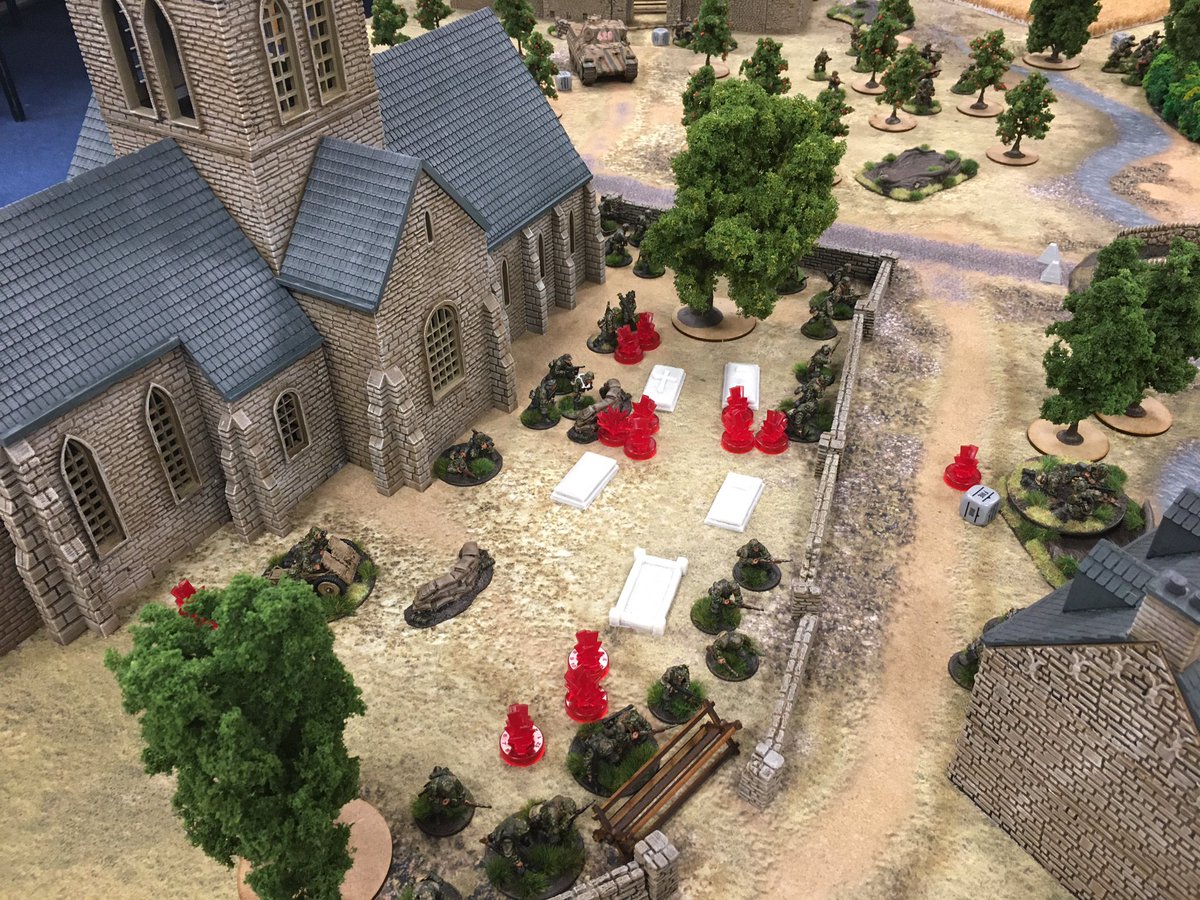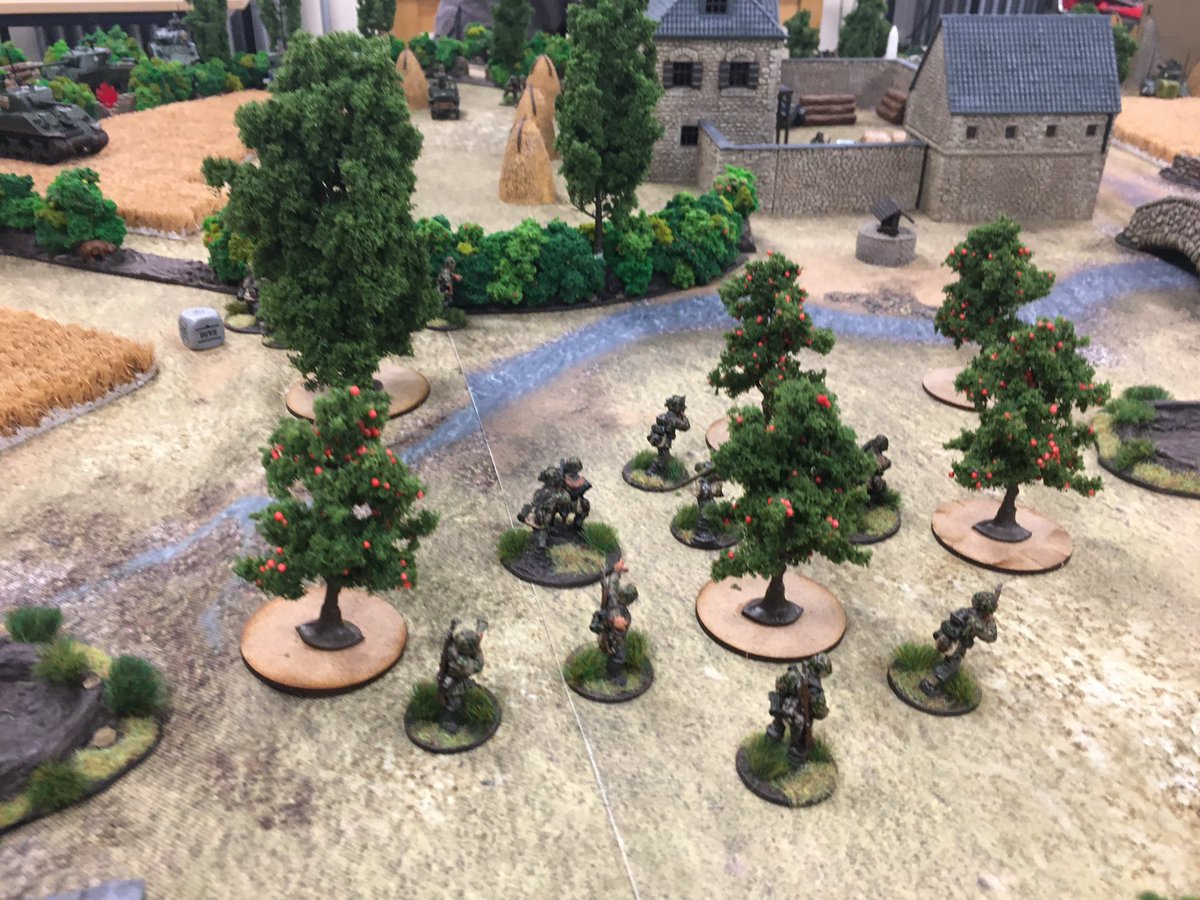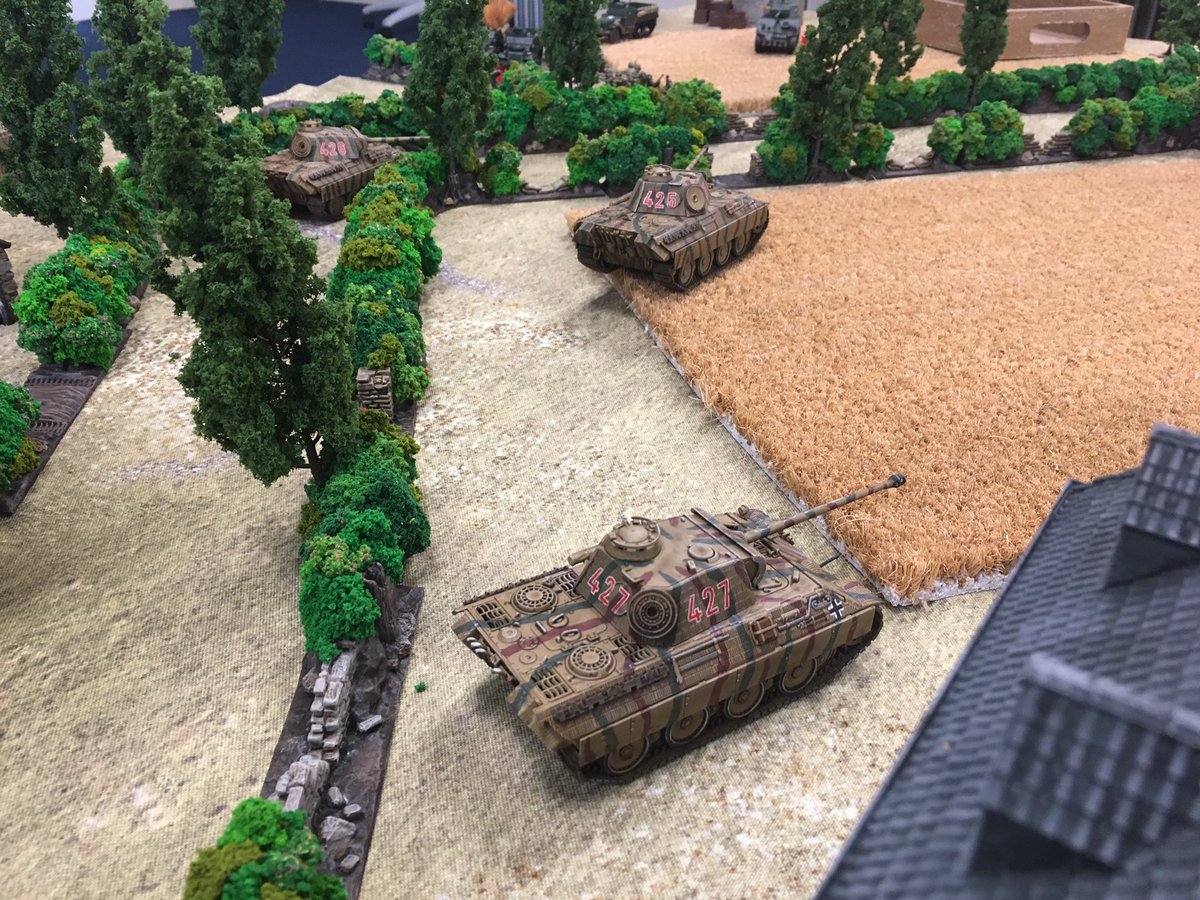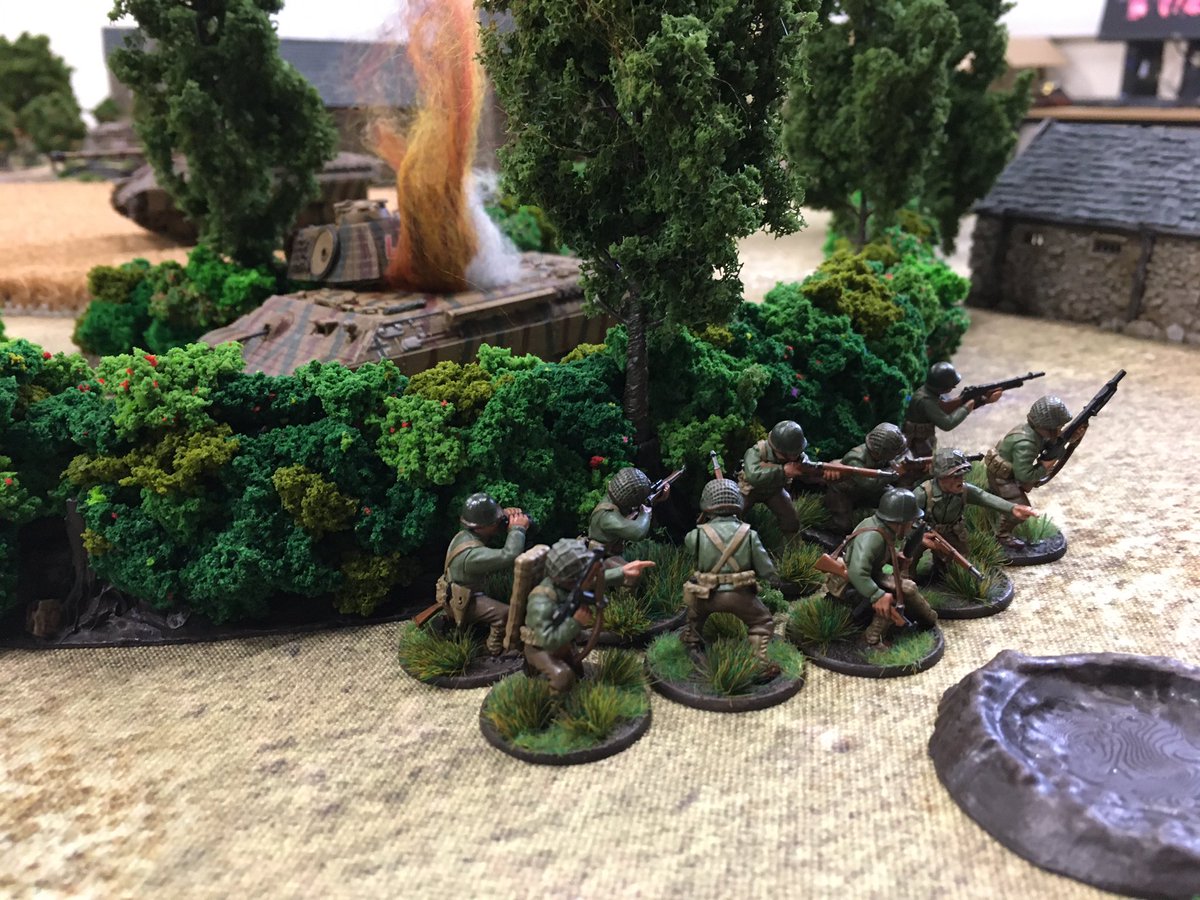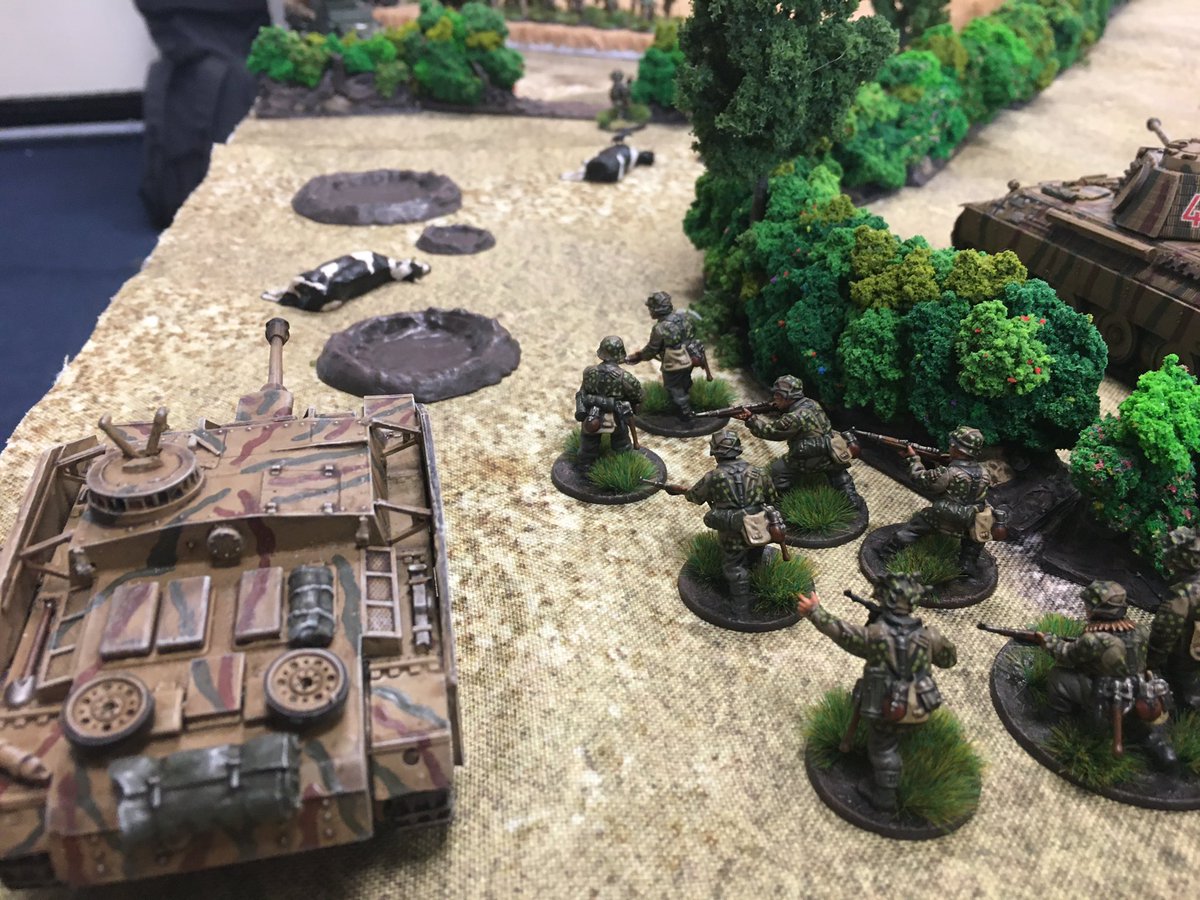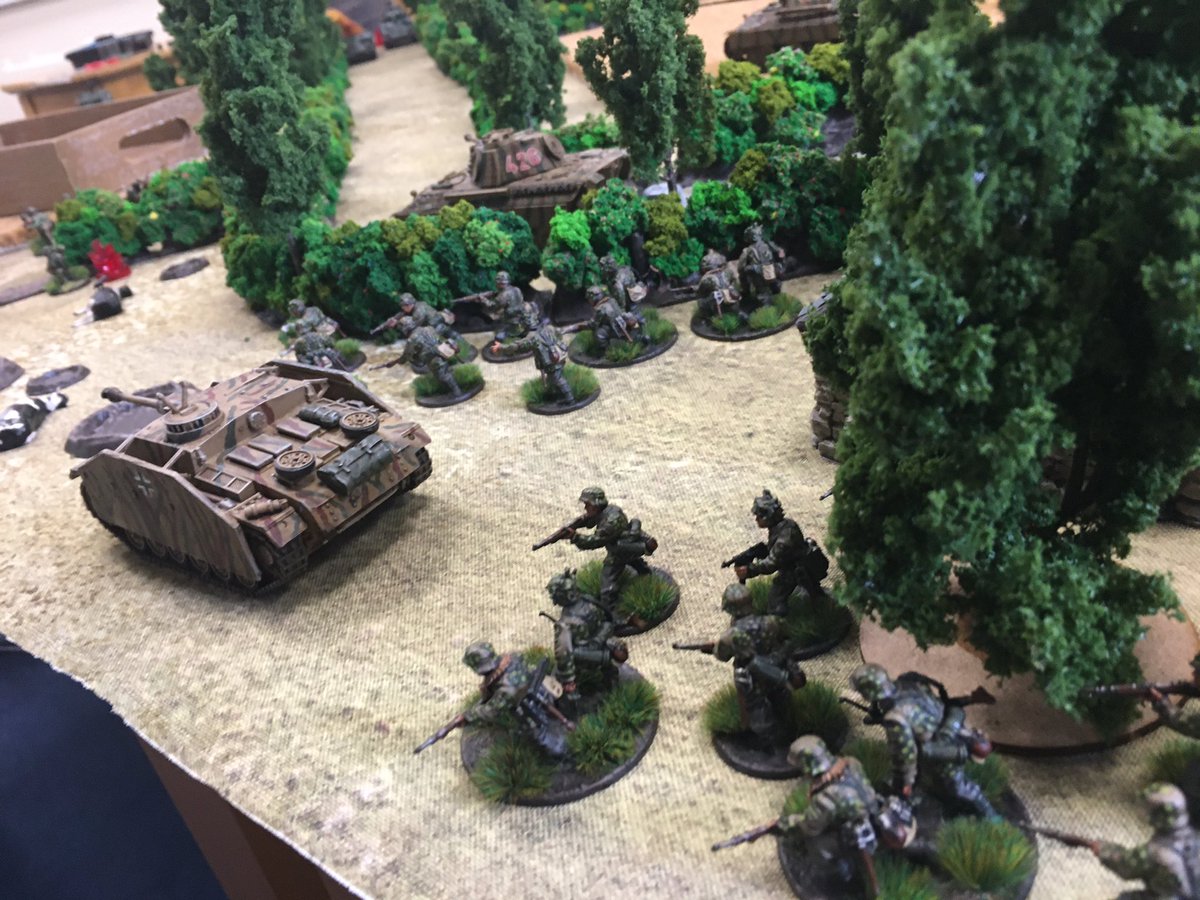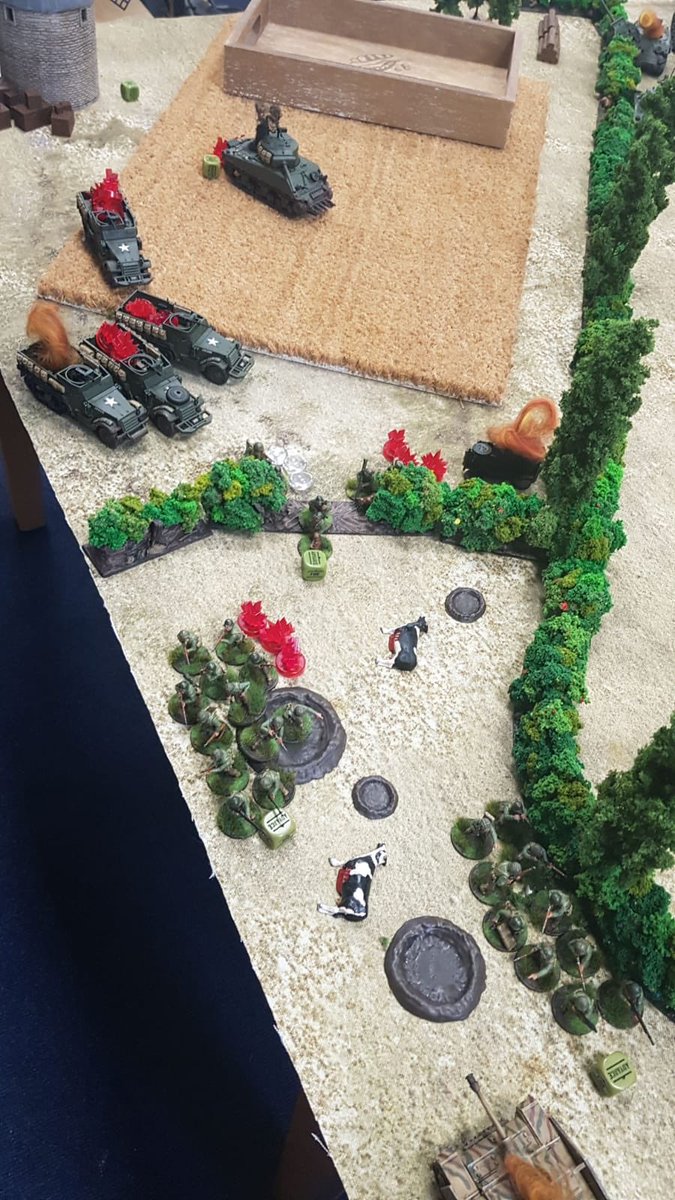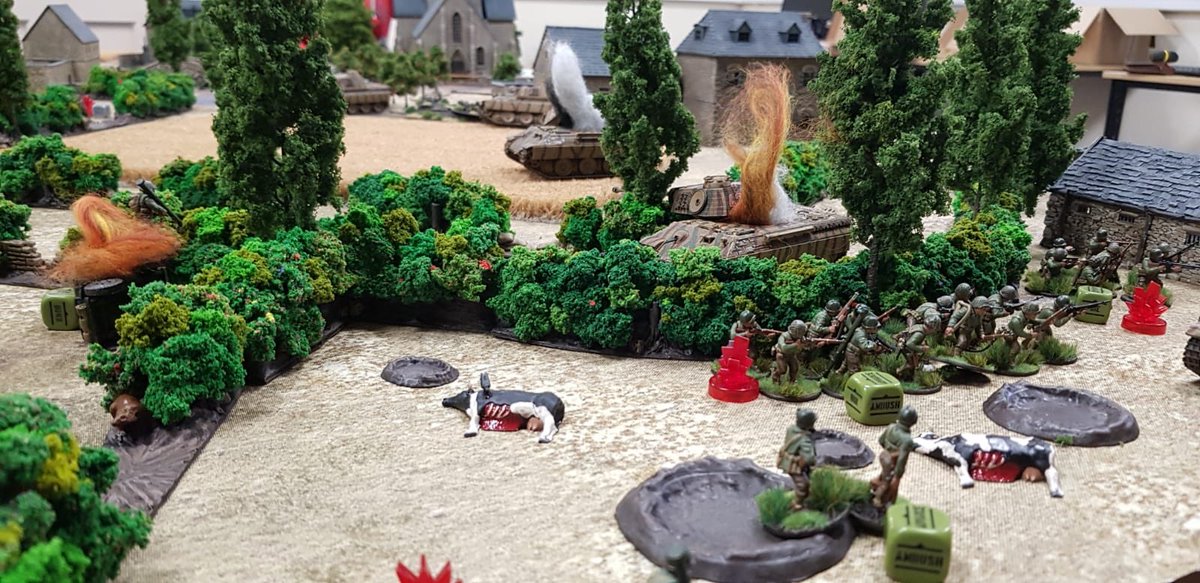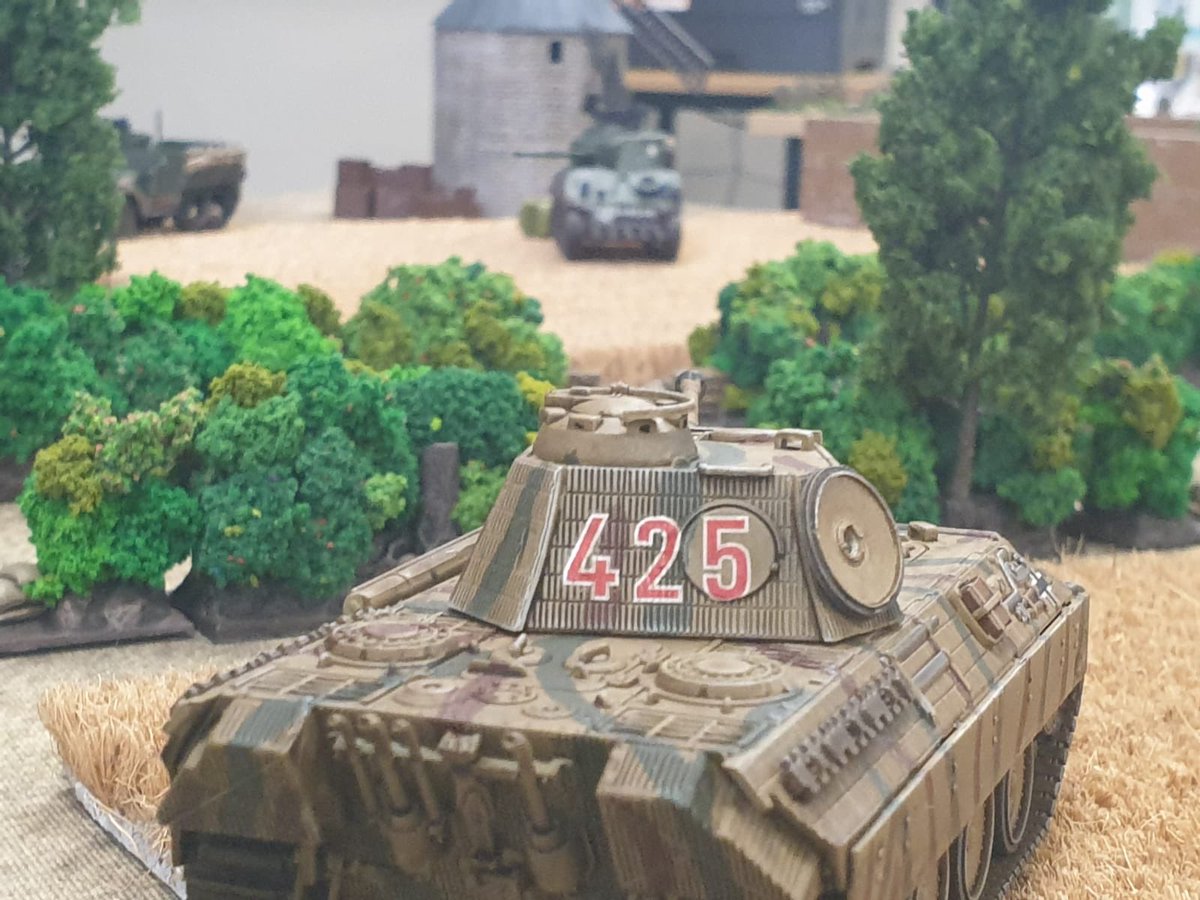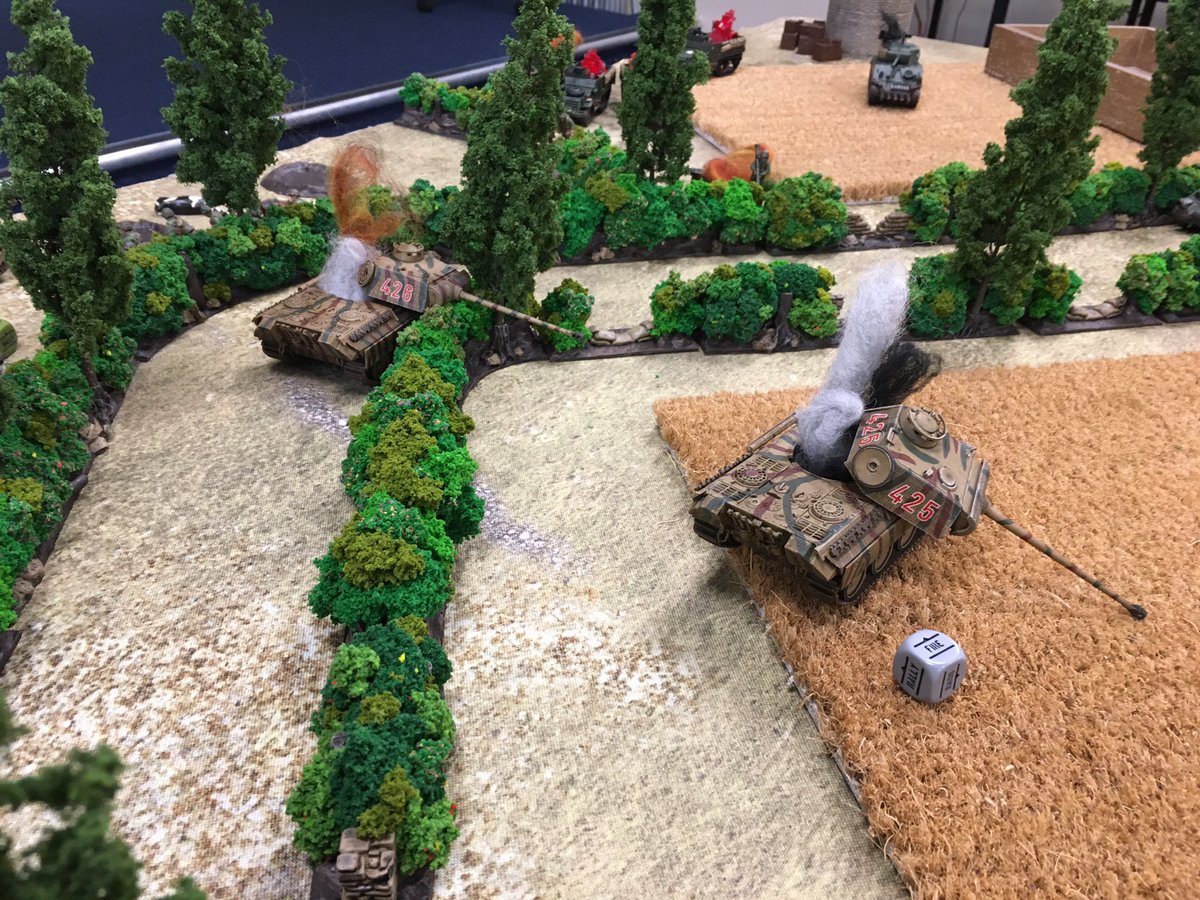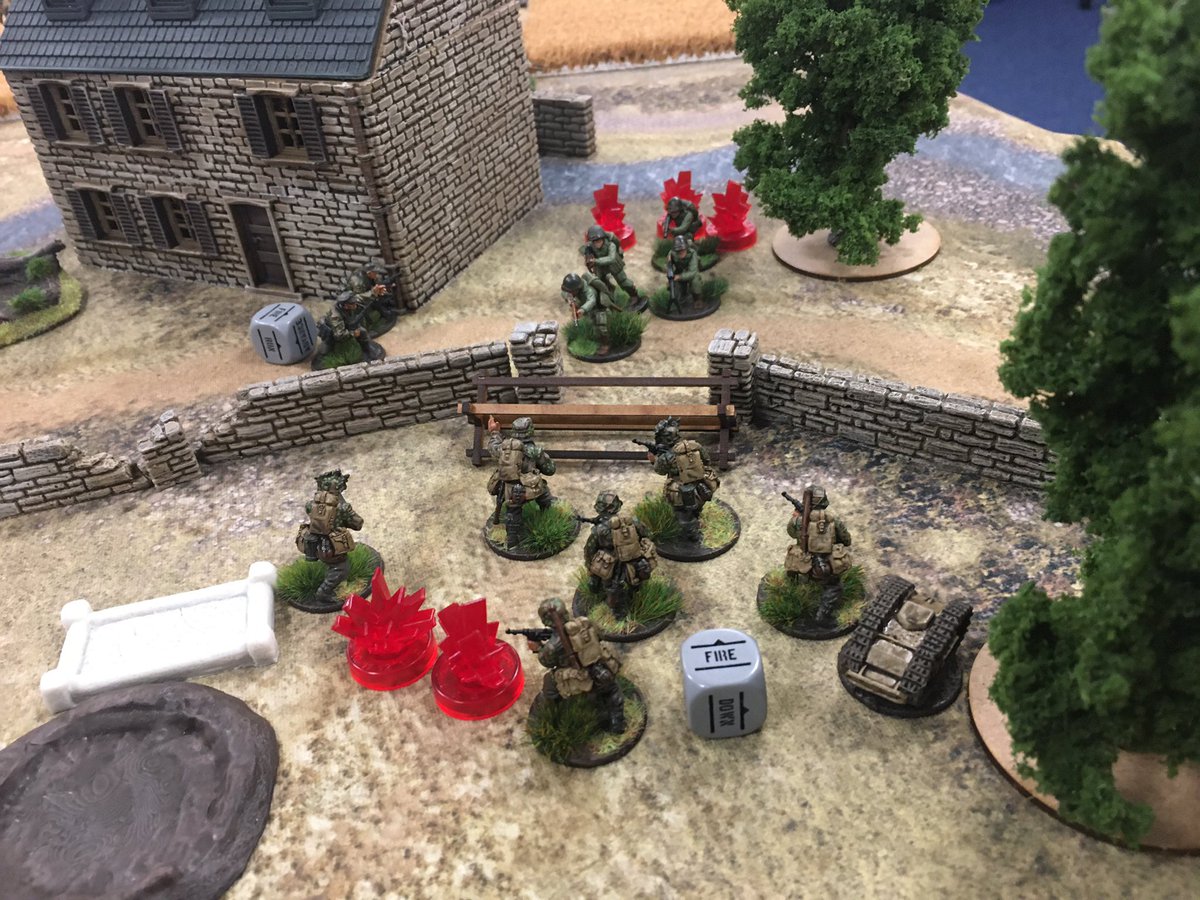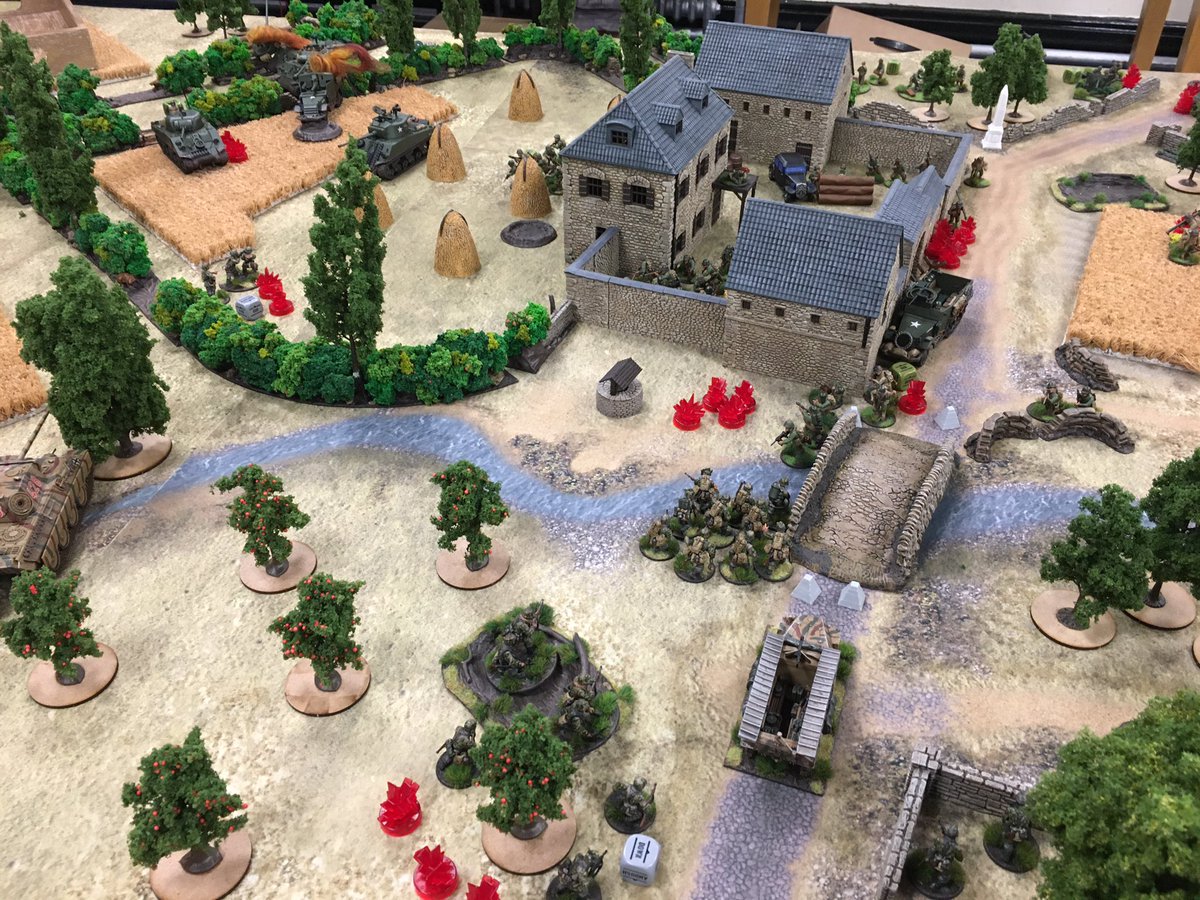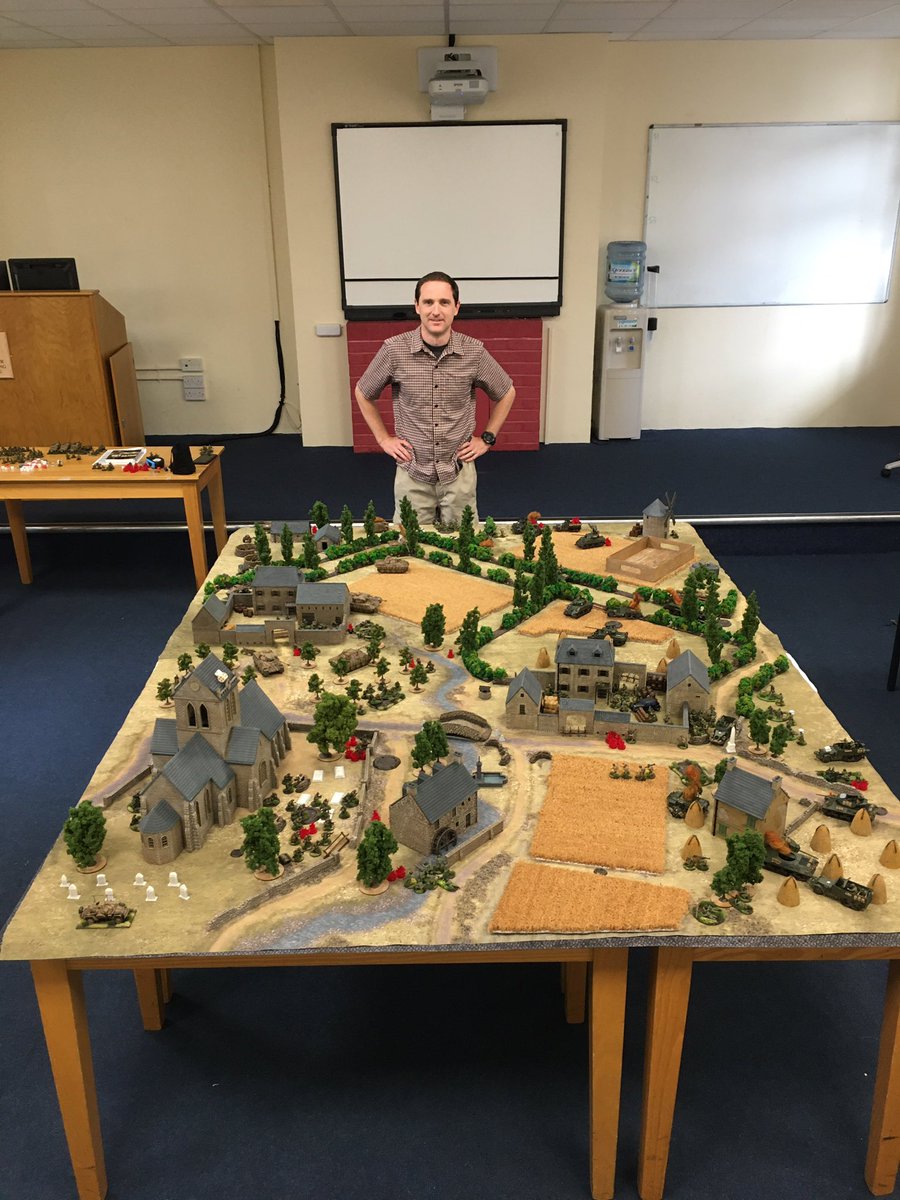AAR (Thread). American Sector, Normandy, late-June 1944. Outskirts of a small rural village. Terrain is largely bocage fields, lightly wooded with two walled Norman farmsteads and dominated by the local village Church. Movement is predominantly slow going with limited LoS.
Amidst a generalised US offensive, an Infantry Company w/tank support must attack, destroy German forces (particularly armour), securing the two farmsteads and open the main road IOT facilitate a break out of their main Armoured Divisions.
East of the farmsteads and village edge, the wheat fields and bocage provide some manoeuvre room, though the going is slowed by heavy bocage, rough ground and limited clear lines of fire. Maximising effective control of this will be key for US forces.
German PzGrenadiers elements being fed into the fight are mounting a tenacious defense against the increasingly material superior Allies. Their defense hinges upon the grenadier sections in two stout fortified farmsteads, with Panzers dominating any open ground to their west.
Open turn: US Infantry platoons infiltrate forward under the cover of darkness aiming to break into the first farmstead. Medium Mortars bed-in at the village outskirts ready to provide close fires.
On their left, US Army Rangers tasked to secure the key bridge move up through some outling houses, under the cover of a heavy tank destroyer ready to make a dash for the vital terrain as soon as an opportunity arises and German defences are suppressed.
The remnants of the Forward PzGrenadier section are mercilessly gunned down by advancing infantry and US tanks which have crashed through the Bocage, bulldozing a route forward. The farmstead falls into US hands, placing significant pressure on the German right flank.
On their extreme right, a full US platoon attempt to push forward through tunnels between the wheat fields, aiming to capture the watermill, a key element of the interlocking, mutually supporting German defensive positions around the bridge.
Demonstrating significant material superiority, Allied forces continue to push forward with additional platoons following closely behind the leading elements, awaiting an opportunity to exploit any gaps prised open in the German line.
Whilst some armour has broken out into the Bocage, the majority of the attacked tank platoon remains concentrated and canalised along a single lane bordered by dense bocage either side... perfect ambush territory for any prowling German Panzers!
Now alert, the well-sited 88mm FlaK engages at long range, dominating the main approch road, destroying multiple US armour assets and devastating US infantry sections in the direct role. It almost single-handled blunts and then blocks any further US advances in the centre.
Behind the watermill, a full PzGrenadier Zug moves forward, establishing a strong secondary defensive line capable of unleashing ferocious firepower from its six MG42 teams. This Zug will also form the core of the counter-attack against the lost first farmstead.
On the German left, PzGrenadiers, supported by a Panther No. 426 stalk forward. These will anchor the German right and protect the heavy 12cm mortar section established to their immediate rear in farm outhouses and cattle pens.
Panther No. 426 creeps forward around the Bocage lane corner and engages the advancing and fatally canalised US armour. Given close protection from the accompanying PzGrenadiers it goes on to eliminate two Shermans and a tank destroyer before succumbing to return fire.
With burning wrecks only adding to its difficulty in finding manoeuvre room, Allied armour suffers heavily until they finally deal with Panther No. 426. Only then can they rumble forward, attempting to turn through 90 degrees and provide direct heavy fire support to the attack.
Despite growing losses, US infantry !now protected by its stone walls consolidate their position in the first farmstead, fortifying it in advance of the expected heavy German counter-attack.
Outside the walls, the other US platoon stubbornly pushes forward amidst punishing fire, it’s strength weakening amidst point blank heavy weapons and small arms fire. Some respite is gained by reaching cover out of line of sight behind the watermill but casualties are horrendous!
After established its secondary line and whilst preparing its counterattack, No.2 Zug is caught in a withering US artillery bombardment causing significant chaos, pinning units & shattering cohesion despite causing limited casualties. The counter-attack now shifts to the centre.
With No.2 Zug suppressed by US artillery, No. 3 Zug takes over the counter-attack, pushing forward through the orchard. Whilst armed with numerous Pzfasusts, they remain very wary of the remaining US armour to their west.
However, taking advantage of the canalised US armour, the German Panthers break out, rumbling through the wheat fields, their long 75mm guns wreaking havoc on the extreme left targeting any remaining US armour and exposed Infantry sections.
Faced with attacks on the left and centre bogging down against the main weight of German infantry, the US commander attempts a final bold move - a mechanised flanking attack against the relatively lightly held German right.
The attack makes considerable headway, aided by the elimination of Panther No. 426. There’s limited German infantry on this flank, and it’s Panthers though powerful are vulnerable without close grenadier support.
Faced with this strong Allied flanking attack, the Germans have no choice to commit their limited reserves IOT to attempt to at least blunt if not stop the attack, buying time for other elements to re-orientate the defense. A StuG and more Grenadiers move forward to engage.
The German right advances and the fighting devolves into a hellstorm with atrocious losses on both sides - infantry and armour - at such close ranges. The StuG engages at effectively point blank range. Grenades unleash a hail of MG fire. The return fire is equally devastating.
Amidst this carnage, German artillery is unleashed causing mayhem. Sections are wiped out to man, command elements eliminated and their mechanised transports pinned to oblivion or sent to it entirely. As the last rounds land, this final serious US offensive effort is halted.
Amidst the shattered landscape, pot marked by blasted craters, burning wrecked lie. Despite achieving kill ratios of more than 2:1 some Panthers succumb to repeated US tank hits. The right flank is utter carnage with no-one emerging as victor.
The remaining armour continue to engage each other. Amidst the tight Bocage, firing clear Line of Sight is the key to survival. Panther No. 425 won a number of key duels before being ground down and silenced.
By the end of the game, two Panthers lie silenced, more than 10 Allied vehicles - tanks and halftracks - have been destroyed. German armour has been blunted, but not destroyed. The other three Panthers continue to dominate the centre field.
Back on the right, the last remnants of US. 1 Pl having valiantly fought forward through the wheat fields are annihilated in a storm of close SMG fire by the secondary defensive positions of No. 2 Zug who recovered from the chaos of the US artillery barrage.
With the left flank in carnage and the right flanks exhausted for both sides, the fight returns to centre at the very end. The first farmstead remains lost, too little combat power remains to retake it. However the bridge is secured and remains blocked. A minor German victory.

 Read on Twitter
Read on Twitter